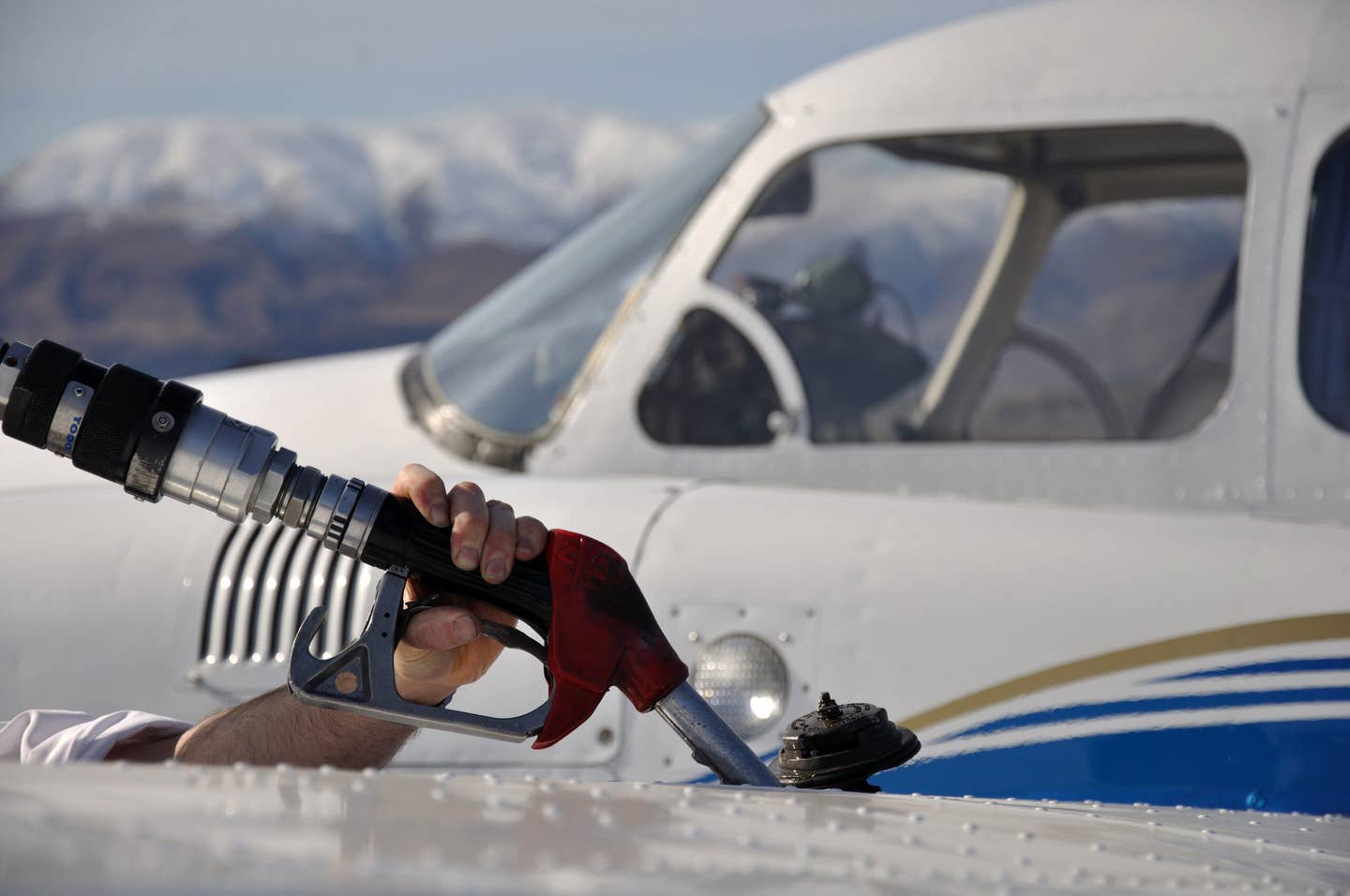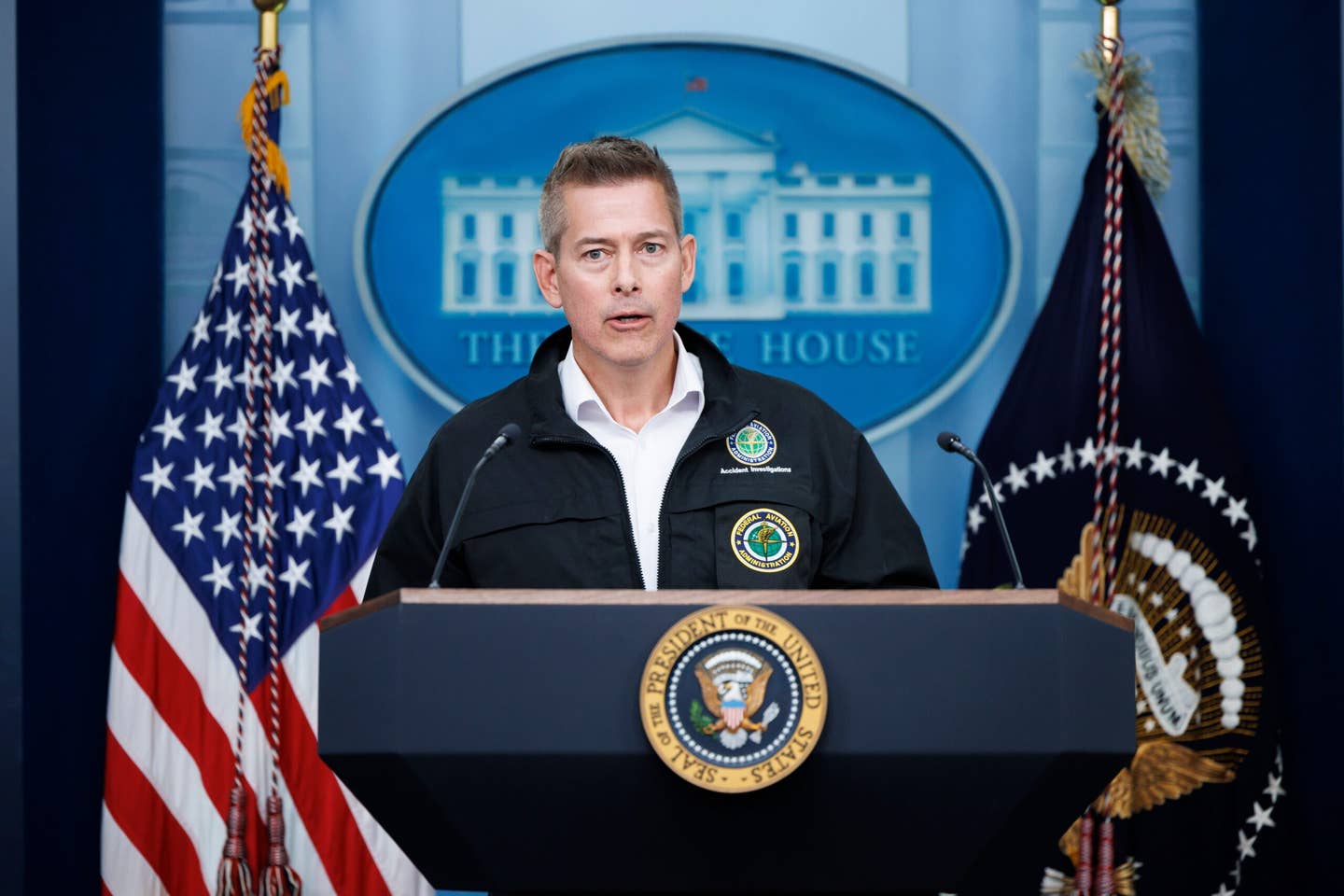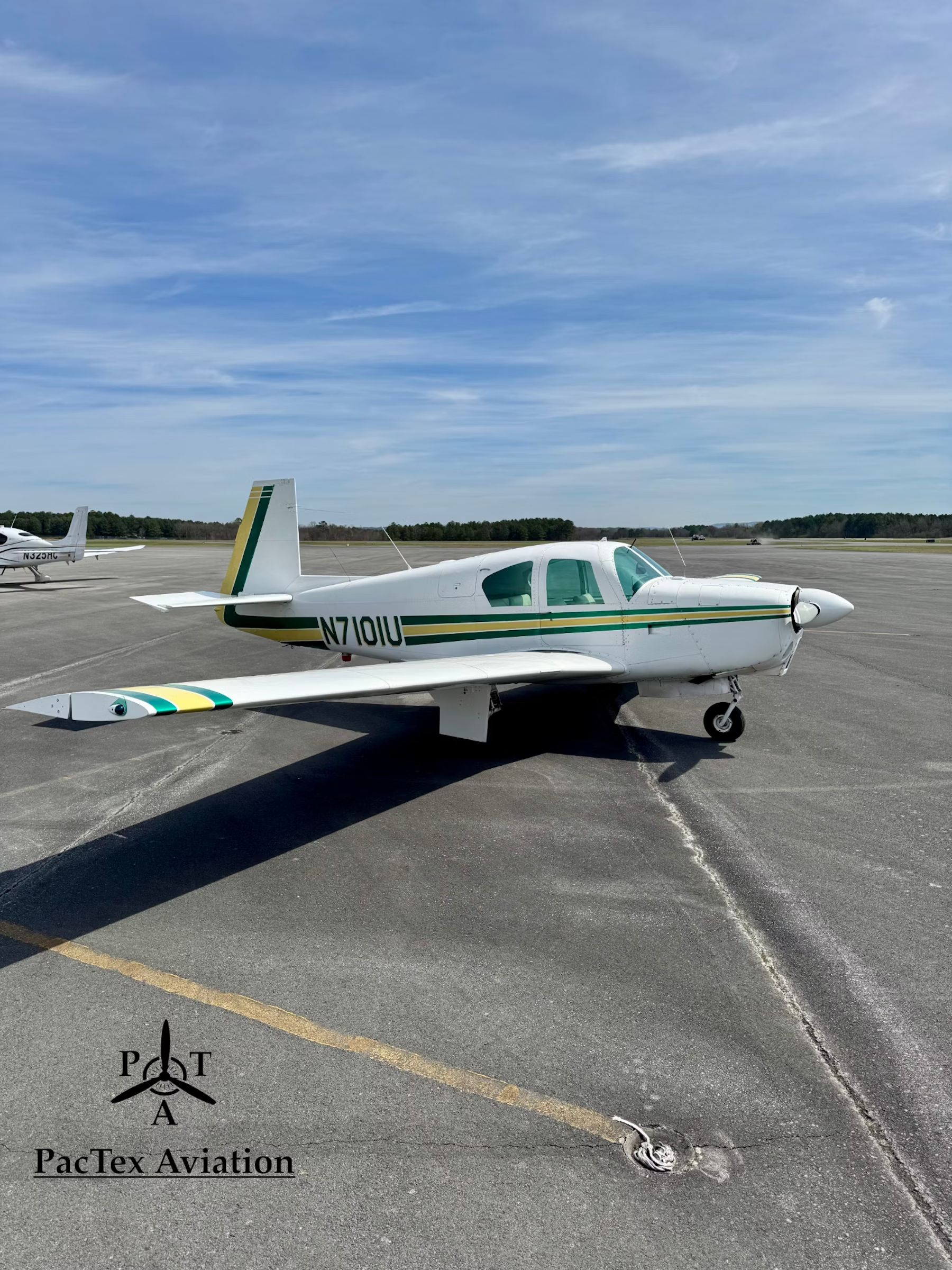Update Triggers Questions on Unleaded Avgas Progress
GAMA hosted the EAGLE roundtable, bringing together stakeholders looking for more transparency and urgency.

The purpose of EAGLE is to chart the safe and smart transition to an unleaded future for the entire general aviation fleet. [File photo: Shutterstock]
The clock ticks louder each week, it seems, as pressure grows to move forward with a viable replacement for the primary unleaded avgas in use in the general aviation fleet. And we need more transparency on the process—and the very recipes for the fuels in question—according to industry leaders.
To focus a lens on the issue—and compel critical questioning to the process—the General Aviation Manufacturers Association on Monday hosted a roundtable of stakeholders to the EAGLE (Eliminate Aviation Gasoline Lead Emissions) initiative to give an update on how things stand. The initiative seeks a complete replacement of leaded fuel by no later than 2030, with a sunsetting of the fuel while maintaining a high level of safety in GA operations, which it primarily affects.
The panel was led by the co-chairs of the initiative, Mark Baker, president and CEO of the Aircraft Owners and Pilots Association, and Lirio Liu, executive director, aircraft certification service for the FAA, and supported by leaders from the National Business Aviation Association, National Air Transportation Association, Experimental Aircraft Association, Helicopter Association International, and the National Association of State Aviation Officials.
Leaders from four key manufacturers with a front-row seat to the sunsetting of leaded fuel joined them with their input on the state of affairs:
- John Calcagno, president and CEO, Piper Aircraft
- Ron Draper, president and CEO, Textron Aviation
- Patrick Horgan, president and CEO, CubCrafters
- Shannon Massey, senior vice president, Lycoming Engines
The urgency is real: The Environmental Protection Agency released its proposed finding on leaded aviation fuel in October 2022, setting the stage for a final ruling that industry leaders expect to occur by the end of 2023.
Getting to Approval
At the moment, four candidate fuels are in the process of development and testing. However, they are taking two different pathways to achieve that goal.
The first is based on the FAA’s long-running Piston Aviation Fuel Initiative (PAFI) program and utilizes consensus standards developed in concert with the American Society of Testing and Materials (ASTM). This was the process completed by Swift Fuels with its UL94 unleaded avgas that came into the market in earnest starting in 2015 and reaching widespread use as of 2021. Two entities have 100-octane fuel in the evaluation process under PAFI: Afton Chemical/Phillips 66 and Lyondell/VP Racing.
“Currently, the PAFI fuels are completing full-scale engine durability and endurance testing, which is expected to complete by the end of July,” according to Peter Bunce, president and CEO of GAMA. When a fuel passes the next gate of testing, it will proceed onto the next level with airframe OEMs. Completion of the ASTM process will allow entry into the market with a high degree of confidence in its suitability.
The alternate path is through the supplemental type certificate (STC) process, which is proprietary to the fuel manufacturer working directly with the FAA. Two STC fuels are currently using that process for approval—Swift Fuels’ 100R and GAMI’s G100UL. Swift Fuels also plans to go through the ASTM acceptance for its high-octane fuel and, according to GAMA, ASTM already has a task committee set up to evaluate the fuel.
GAMI has received FAA STC approval for use of its fuel in a wide range of powerplants, and owners can purchase the STC for their aircraft now. However, the fuel is not yet available in the market. According to GAMI, the fuel will be available “as fast as production can be ramped up and fuel can be delivered to airports. It has been estimated that 2023 will be a year of logistics with G100UL avgas appearing more widely in 2024. The first customers for the fuel are likely to be flight schools.”
Cirrus is currently testing the GAMI G100UL in its fleet, and other OEMs stand ready to do so, but the process is more incremental—and less transparent as a result of its proprietary nature.
Octane Is Only One Metric
Lycoming’s Shannon Massey delivered her comments, representing the more than 100,000 powerplants that the aviation engine OEM has shipped in its 95-year history—with more than 650 type certificates for the various models in the field. These are in addition to the engines powering experimental aircraft.
More than half require high octane fuel, according to Massey. “(They are) the workhorses of the fleet. They are ferrying supplies to remote locations. They’re patrolling borders. They’re supporting military operations….The loss of the ability of these airframes to serve society would definitely be impactful, which is why we, as an OEM [and] engine provider, are looking to make sure that we know—under unleaded fuels and the development that’s taking place in those—what are those key characteristics?”
Massey called for greater involvement in the process, regardless of which fuel was making its way through the gates—and which pathway to approval was pursued. “We need to ensure that whether it’s through industry/government—the PAFI authorization process—or be it the supplemental type certificate (STC) process, that we have a good understanding and knowledge of the specific tests, and which models of engines are evaluated. So that way we can stand behind that portion of it.”
However, getting a fuel to a required octane level is only one of the metrics needed in bringing it to the market successfully—and safely. Massey outlined seven elements that Lycoming seeks answers on, which were echoed by other stakeholders on the panel.
Toxicity
In the quest for a higher-performance fuel, aromatics—chemical compounds (hydrocarbons) that increase octane—replace the tetraethyl lead (TEL) present in 100LL. However, many are known to also be carcinogenic, such as benzene and toluene, and their use is limited in gasoline in many countries. “So we don’t want to replace one fuel for another one that’s going to be harmful, whether it be to the environment or the public,” said Massey.
“We need the transparency of the chemical composition of each fuel to be evaluated by some government entity to give the industry a thumbs-up or -down that what is put into the atmosphere when the fuel is burned is not likely to be a significant concern now or in the future to be harmful,” said Bunce in a follow-up with FLYING. “This is why we encouraged the FAA to have either EPA or some other government entity assess the components of all new fuels to give the industry their expert judgment and green light to move forward. If the EPA won’t do it, then I think the FAA’s choice of the National Academy of Sciences to pull together an expert panel is a good alternative.” There is concern that one or more of those compounds may be in a candidate fuel—but this cannot be confirmed without transparency to the makeup of that fuel.
Materials Compatibility
An engine doesn’t stand alone—and it too is made up of a myriad of parts and components. Of particular concern to Lycoming, as well as airframe OEMs, are the effects that a new fuel will have on other materials used within the powerplant—such as O-rings and seals—as well as the fuel system and other accessories within the airframe tying the tanks to the engine and sending the byproducts out through the exhaust.
Original testing of early unleaded fuels bears out this concern. Ron Draper of Textron Aviation said in the briefing, “We have tested fuels in the past that have a similar but different recipe, and we had some results that were…I guess, less than desired. In the past, some of those fuels did have wear and tear on soft materials in the airplane—O-rings, gaskets, hoses, bladders, sealants—and we’re unsure of these new fuels, what (they’re) going to do to the engine, what it’s going to do to the airplane.”
Stability
In order to survive production, storage, transportation, tankering, and extended time within FBO and aircraft tanks, a fuel must be stable. It cannot degrade quickly or harm the containers in which it is kept, to a certain extent. Corrosive properties may impact the metal or other materials in the engine or airframe as fuel sits within them over time. The octane may also degrade over long periods.
Vaporization
The distillation curve is another concern. “Fuel’s ability to vaporize at any given temperature—that’s key if we’re looking for ‘startability,’ ‘runability,’ and [addressing] vapor lock concerns,” said Massey. These are not engines or aircraft that can work 99 percent of the time, as was pointed out by John Calcagno of Piper Aircraft.
Density
Another aspect of a new fuel most may not have considered is a difference in density affects a number of things, including the fuel’s overall weight. Aromatics used in unleaded fuel tend to be denser, potentially increasing the fuel weight. Remember the rule of thumb to use 6 pounds per gallon of 100LL in weight and balance calculations? That may change with the new fuels. It may also affect center of gravity, seeing as how most fuel tanks are positioned near the aircraft’s CG—but not all are.
Fuel Controls
A sixth aspect to take into account is any change in the fuel’s volume and how that might affect the metering. “Fuels with increased density will exhibit higher mass flow rates,” said Massey, “and thus higher fuel-to-air ratios.” So, fuel controls would have to be adjusted to accommodate a denser fuel—and keep operations predictable and safe.
Repeatability
The final key noted by the panel is the ability to repeat the fuel recipe by way of a mature production specification. Massey concluded: “These are all considerations that without us having the knowledge base and being able to characterize and/or standardize the testing methods, what does that mean and how does that impact our current (engines) that are out there?”
What’s Next?
FBOs stand ready to accept the fuel—whatever reaches the market first—once accepted and approved. But the market seems to think high-octane fuel should already be out there. Curt Castagna of NATA reported, “Historically, aviation fuels sold as a commodity [are produced] and delivered to the airports and FBOs through the fuel distribution network, where those entities are relying on today the four major fuel suppliers that are delivering that fuel, to bring them a fuel that has, for the last many decades, met an ASTM standard.”
A mature production specification is needed, then, to get unleaded avgas into the market in real quantities—but the perception is running ahead of reality. Castagna said, “There [are] expectations by the users that are buying fuel today—FBOs and airports are hearing from both their user constituents and then their ‘outside-the-fence’ community interests” that are looking to see lead removed.
“All of us here today in the industry are unified in removing that lead—it’s how do we get there?” Castagna concluded.
While the next stage of EPA’s endangerment finding looms on the horizon, the passing of that milestone won’t stop 100LL sales immediately. But the pressure will be real from those who would use that as an incentive to push forward on that tack.
As Bunce concludes, “The EPA cannot regulate aviation; that is the FAA’s preview. The formal endangerment finding ruling expected by the end of this year will not allow entities to close airports immediately and will not ban leaded avgas immediately. What it will do is kick off the FAA rulemaking process, which is a multiyear journey—which hopefully aligns with our EAGLE timeline of no later than the end of 2030, but sooner if a commercially viable unleaded fuel emerges.
“The danger to the industry would be for communities to ban 100LL prematurely using the EPA ruling, which is just the start of the regulatory process, before we have the commercially viable replacement. This emphasizes the importance of EAGLE and having a methodical and transparent transition plan.”

Sign-up for newsletters & special offers!
Get the latest FLYING stories & special offers delivered directly to your inbox






